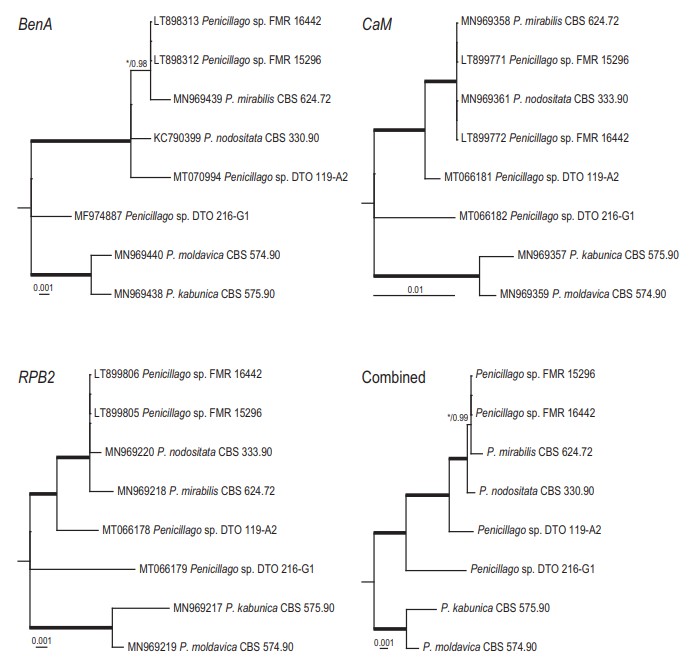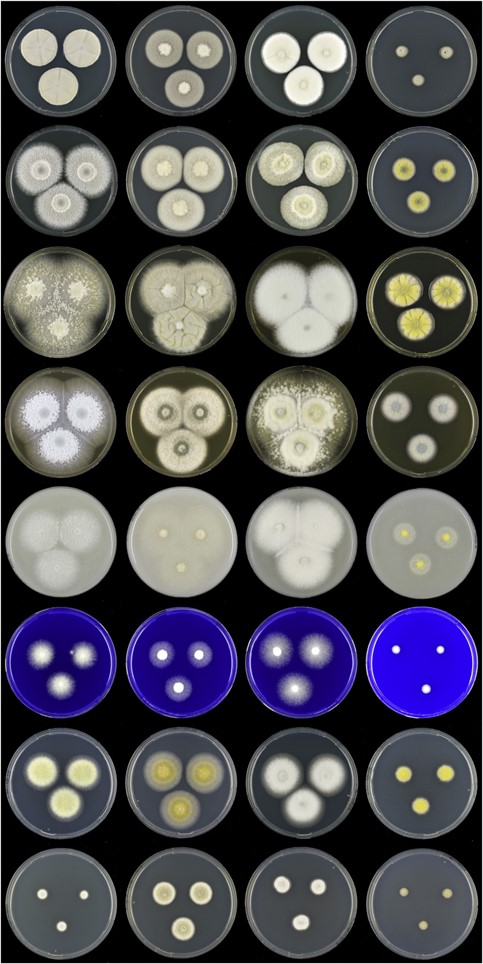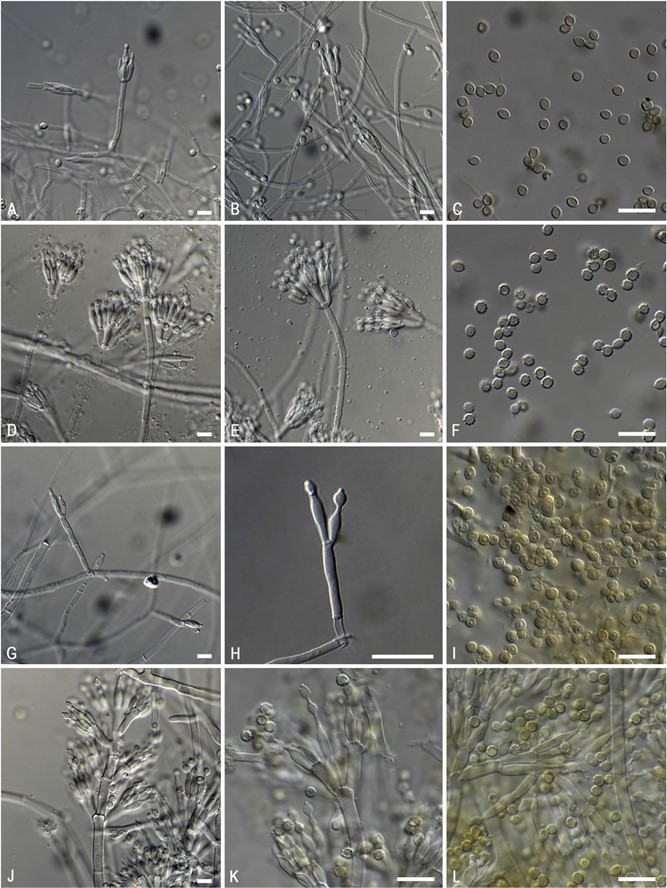Penicillago Guevara-Suarez et al., Fungal Syst. Evol. 5: 64. 2020.
MycoBank number: MB 822073; Index Fungorum number: IF 822073; Facesoffungi number: FoF
Type: Penicillago nodositata (Valla) Guevara-Suarez et al.
Notes: The phylogenetic analysis (Fig. 6) shows that four species can be recognised in Penicillago. These species were all originally described in Penicillium (P. kabunicum, P. mirabile, P. moldavicum and P. nodositatum). Only Penicillium nodositatum was recently combined to Penicillago (Guevara-Suarez et al. 2020) as Penicillago nodositata. The others are transferred to Penicillago below. Morphologically, these species seem unrelated and the most striking unifying character is the production of ampulliform phialides that have a relatively long, narrowed neck. They also share the production of penicillium-like conidiophores, produce conidia in green shades, are unable to grow on CYA incubated at 37 °C and have moderate growth on CREA without acid production. A comparison of the macro- and micromorphology of these species is shown in Figs 7 and 8 and summarised in Table 3. Penicillago nodositata is macroscopically distinct. This species produces relatively smaller and more colourful colonies than the other three members of the genus. Penicillago mirabile (= Penicillium mirabile) grows better on CYAS than the other species in the genus. Penicillago kabunica (= Penicillium kabunicum) and P. moldavica (= Penicillium moldavicum) are phylogenetically closely related and can be differentiated on their conidium ornamentation (Ramírez 1982). The former pro- duces smooth-walled conidia, and the conidia of the latter are echinulate.


Fig. 6. Phylogenetic trees based on single and a combined data set of BenA, CaM and RPB2 sequences showing the relationship between Penicillago species. The BI posterior probability (pp) values and bootstrap percentages of the maximum likelihood (ML) analysis are presented at the nodes; fully supported branches are thickened. Values less than 70 % bootstrap support (ML) or less than 0.95 posterior probability (Bayesian analysis) are indicated with a hyphen or not shown. The bar indicates the number of substitutions per site.

Fig. 7. Overview of macromorphology of species classified in Penicillago (Penicillaginaceae), 7-d-old cultures at 25 °C (unless mentioned otherwise). Columns, left to right: P. kabunica CBS 575.90, P. mirabilis CBS 624.72, P. moldavica CBS 574.90, P. nodositata CBS 333.90; rows, top to bottom: CYA 30 °C, CYA, YES, MEA, OA, CREA, DG18, CYAS.

Fig. 8. Overview of micromorphology of species classified in Penicillago (Penicillaginaceae). A–C. P. kabunica CBS 575.90, conidiophores and conidia. D– F. P. mirabilis CBS 624.72, conidiophores and conidia. G–I. P. moldavica CBS 574.90, conidiophores and conidia. J–L. P. nodositata CBS 333.90, conidiophores and conidia. Scale bar = 10 μm.
Species
